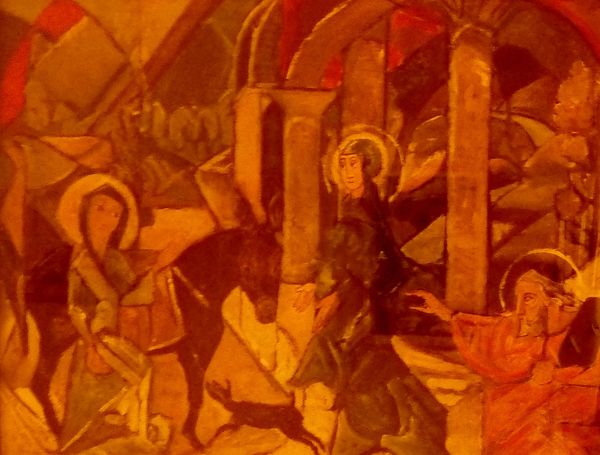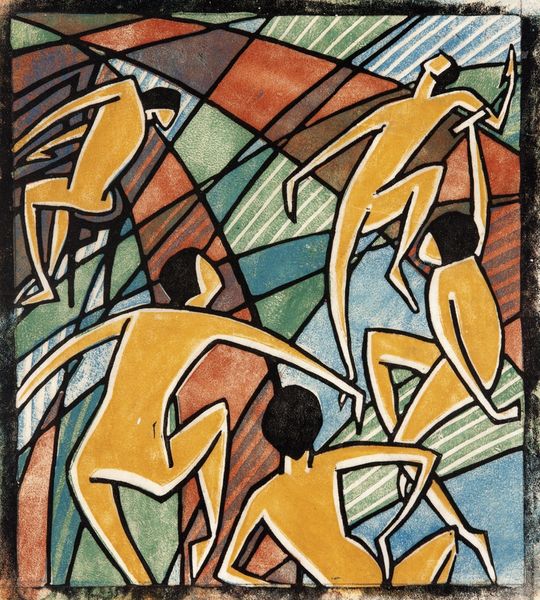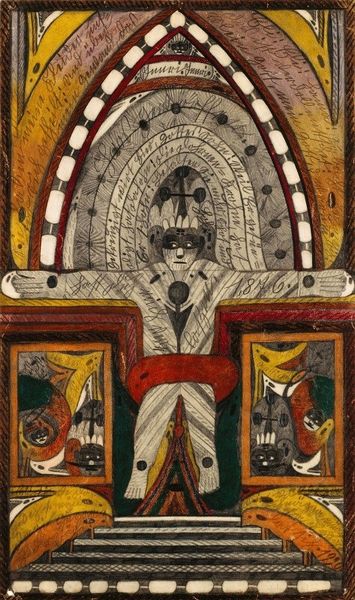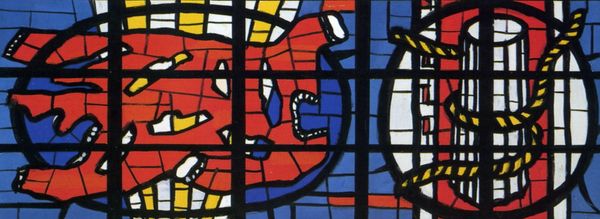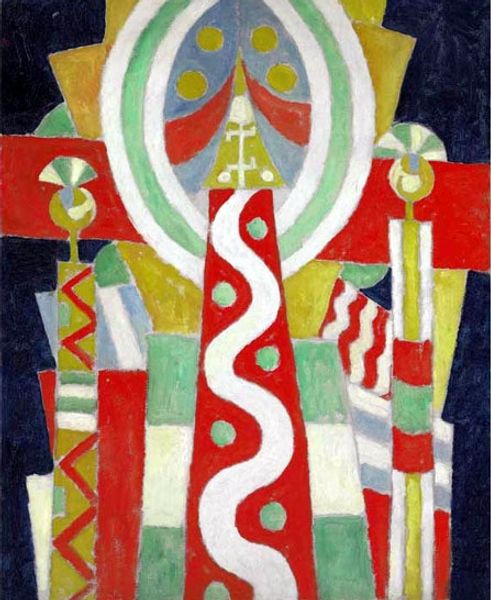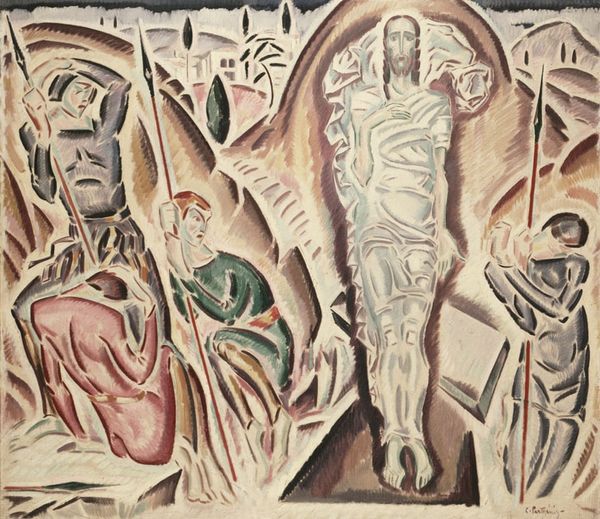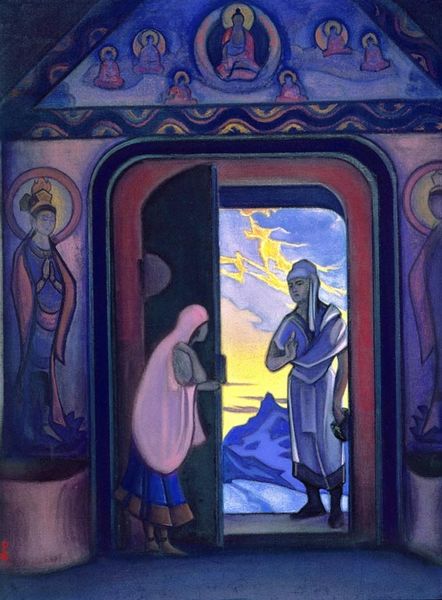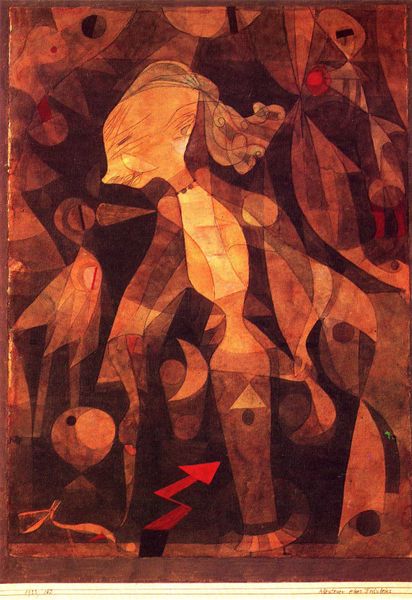
Dimensions: 31.3 x 40.7 cm
Copyright: Public Domain
Curator: Looking at Paul Klee’s "The Lamb," painted in 1920, now residing here at the Städel Museum, one can't help but feel a sense of fragile vulnerability despite its symbolic power. What are your initial impressions? Editor: Well, initially, I’m struck by the raw emotion conveyed through Klee's characteristic simplicity of line and the watercolor medium. There's an undeniable poignancy—a blend of tenderness and suffering—expressed in the seemingly naive representation of this animal and that symbolic drop. The use of watercolor adds to its delicateness. Curator: Absolutely. And contextually, it's essential to recognize the significance of the lamb in Christian iconography. This isn't just any animal; it’s a symbol loaded with meanings of sacrifice, innocence, and redemption, themes deeply embedded in Western culture and power dynamics. Klee is intentionally engaging with that very loaded history. Editor: Indeed. But I also see Klee using this symbolism as a subversive critique. Notice how the geometric fragmentation destabilizes any straightforward reading. That's the beauty of Expressionism, and we might even suggest Fauvist elements at play: he utilizes bold color relationships and simplified shapes to express inner states rather than attempting to represent visual reality in an mimetic fashion. It begs the question: What does it mean to represent sacrifice after the devastation of World War I? Curator: Precisely. The social context is paramount. The painting was created shortly after the First World War, a time of immense social and political upheaval in Germany. Klee, like many artists of his generation, grappled with the loss of faith in traditional structures. "The Lamb" can be interpreted as a reflection on that loss, perhaps questioning the very idea of redemptive sacrifice. Also consider how institutions may instrumentalize symbolic forms like the lamb to propagate specific agendas or doctrines. Editor: And those bands of colour – the shifting greens, yellows, blues. It all culminates in the red cross that seems almost perched precariously on the lamb's back. To me it feels both iconic and deeply, deeply personal. The colors serve a potent force that communicates trauma and pain. Curator: Klee's genius lies in his ability to synthesize such complex ideas into such a deceptively simple image. He offers us a glimpse into the soul of a wounded generation. The work underscores the intricate intersection between personal faith and collective trauma that defined the era after WWI. Editor: It certainly leaves a lasting impression, encouraging viewers to question not just the artwork's aesthetic value but also its cultural and historical significance in a time where people actively needed such cultural icons.
Comments
Join the conversation
Join millions of artists and users on Artera today and experience the ultimate creative platform.

